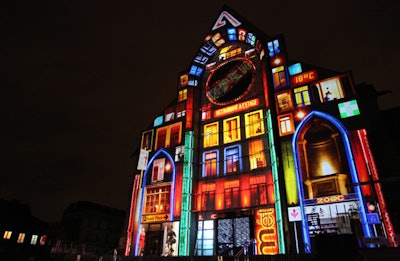
Digital mapping on Notre Dame de la Treille was a show in itself. The mapping displayed everything from large hands appearing to sketch the building to leafy green plants sprouting out of the facade. At the end, the church lit up like a pinball machine in bright colors. Throughout the show, sound effects included church bells, ghostly-sounding choirs, and creaky doors.
Photo: Maxime Dufor Photographies
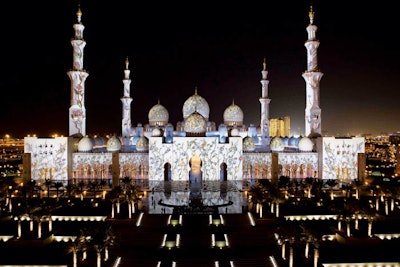
For the United Arab Emirates’ 40th anniversary in December, Obscura Digital created a series of elaborate projections that illuminated the Sheikh Zayed Grand Mosque in Abu Dhabi. The mosque is 350 feet tall and 650 feet wide; a team of more than 50 people worked on the project.
Photo: Courtesy of Obscura Digital
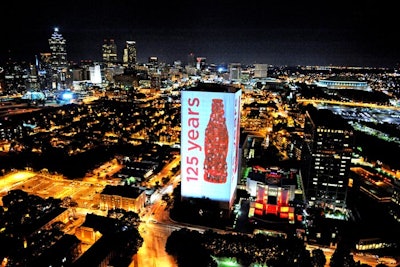
Fig. 11: 3-D Projection MappingCoca-Cola's 125th anniversary in Atlanta in May
Photo: Michael Pugh
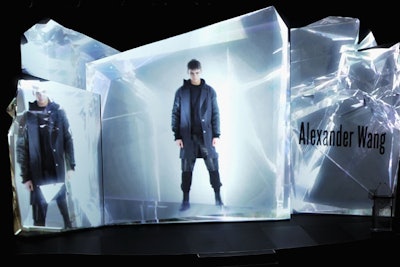
This year's awards saw the introduction of video mapping, a projection-centric component used to introduce each of the category nominees and confirmed award recipients.
Photo: Larry Busacca/Getty Images
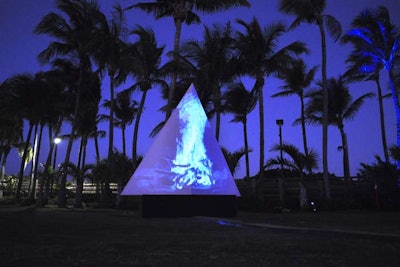
Hennessy Black's digital bonfire used digital mapping technology to recreate a live bonfire. It included four panels with a 3D video fire, as well as crackling sounds and incense to provide the aroma of a campfire.
Photo: Manny Hernandez / Courtesy Hennessy Black
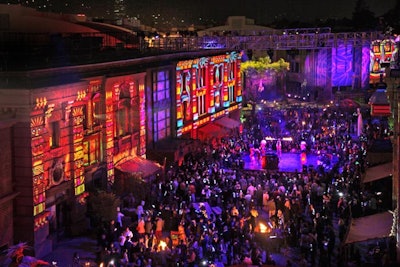
The Warner Brothers International Television Distribution gala filled the Burbank lot with digital mapping, costumed entertainers, and an array of pyrotechnic stunts and decor.
Photo: Nadine Froger Photography
6. Interactive Projections Mapped in Real Time
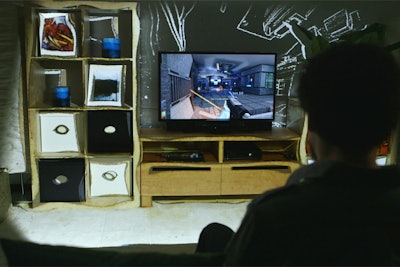
Projection mapping—also known as 3-D mapping—has become a wildly popular tool for event marketers, and a Microsoft Research project extends the use of that technology even further. Designed as a form of immersive entertainment, a prototype dubbed IllumiRoom captures the forms and layout of a room via a Kinect for Windows camera and, with a projector, expands the visuals beyond the screen in real time. The system can even make it look like a room is moving.
Photo: Courtesy of Microsoft Research
27. Runway Projections
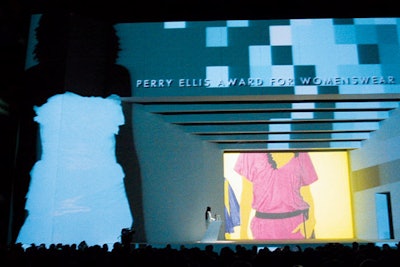
The Council of Fashion Designers of America’s 2003 awards featured dramatic projections by Scharff Weisberg on a white, minimalist set, a clean yet impactful look the show updated with digital mapping projections in its 2011 iteration.
Photo: BizBash
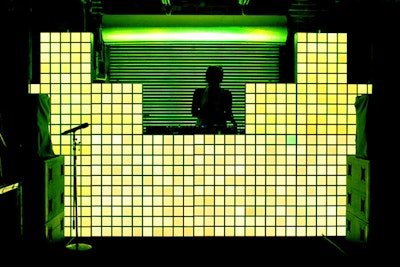
Illuminated tiles covered the DJ booth. The tiles changed colour and later became an equalizer that moved with the music.
Photo: Lu Chau/photagonist.ca for CANDICE&ALISON
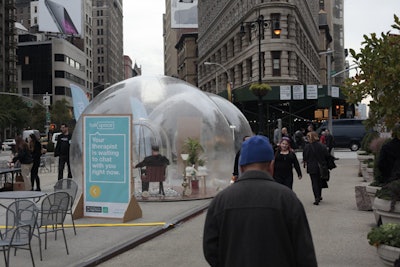
Organizers chose to place the transparent domes near a busy intersection in New York's Flatiron district to raise awareness and remove the stigma associated with mental health.
Photo: Courtesy of Talkspace
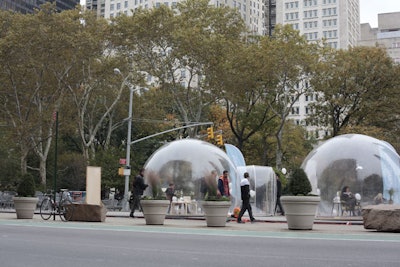
Each dome measured 16 feet in diameter and 12 feet tall, making the pop-up very visible to people walking and driving by.
Photo: Courtesy of Talkspace
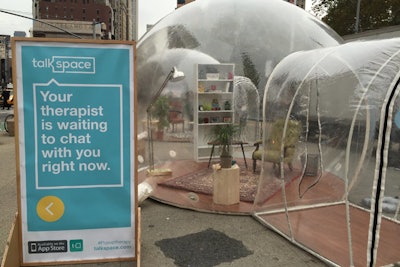
Signage outside the domes invited passersby to step inside to try the app.
Photo: Courtesy of Talkspace
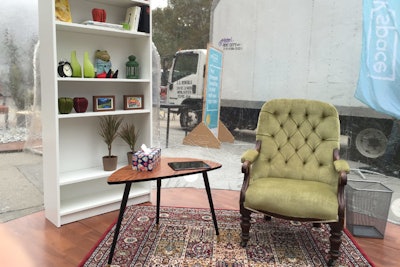
Alon Seifert of Not Grey used vintage furniture, area rugs, greenery, and accessories to convey the feeling of a traditional therapist's office inside each bubble.
Photo: Courtesy of Talkspace
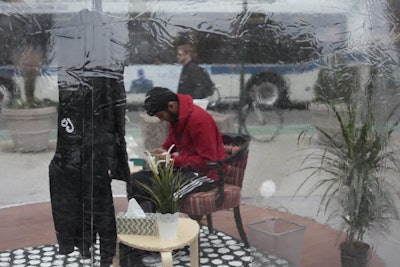
About 50 people stepped inside the domes during the two-day event, but the activation generated more than 90 million impressions from coverage by traditional media outlets and through posts on social media networks.
Photo: Courtesy of Talkspace
Wedding Trend: Natural Elements
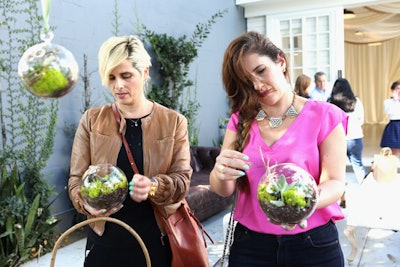
Guests created their own terrariums using succulents, moss, and twigs for a D.I.Y. take on the living elements trend.
Photo: Tiffany Rose/Getty Images for Wedding Paper Divas
Wedding Trend: Color Blocking
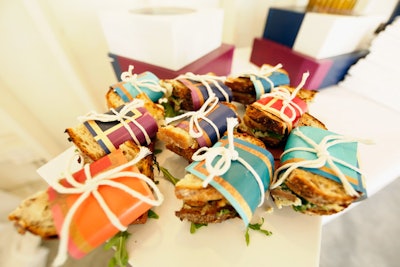
At a soup and sandwich bar from Heirloom L.A. catering, color-blocked paper wrapped sandwiches on the buffet.
Photo: Tiffany Rose/Getty Images for Wedding Paper Divas
Wedding Trend: Chinoiserie
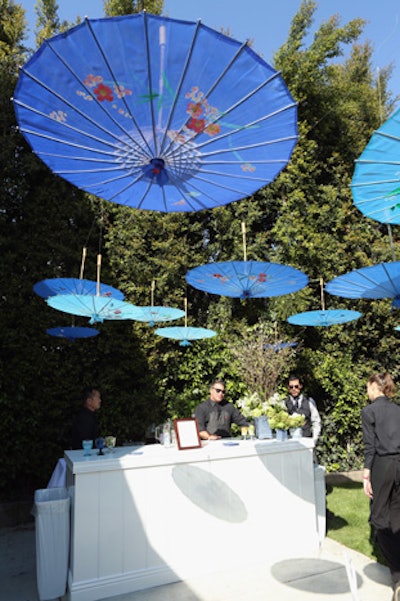
The trend of chinoiserie is resurfacing, and Weiss accented an area of the party space with upturned parasols to offer an alternative take on the concept.
Photo: Tiffany Rose/Getty Images for Wedding Paper Divas



















